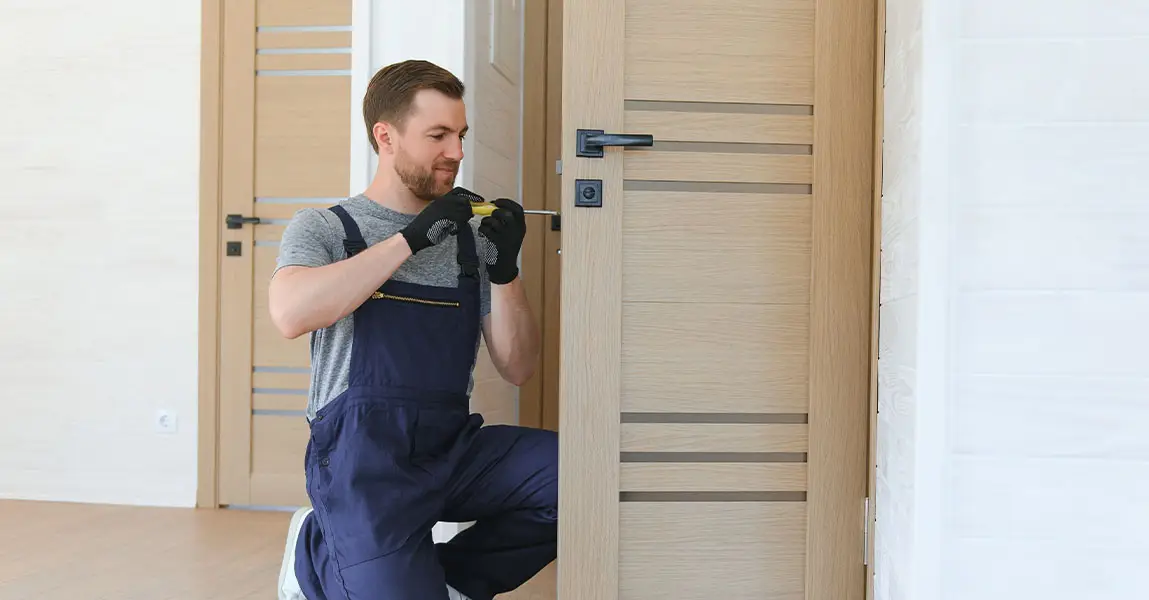Modern workplaces depend on smooth movement, quick access, and reliable security. Every second saved at the door adds up across a team. As business owners, we know that managing keys can easily turn into wasted time and lost productivity. Keyless entry systems offer a simple, effective solution that helps businesses operate more efficiently while improving security and reducing everyday stress.
Reducing Time Lost on Key Management
Traditional keys seem harmless until one goes missing. Then the entire schedule can fall apart. Employees might wait for replacements, supervisors may stop work to unlock doors, and some areas could remain inaccessible for hours. This downtime adds up quickly, especially in larger facilities.
With keyless entry systems, every authorized person can access what they need without waiting. Codes, cards, or mobile credentials replace bulky key rings. If access needs to change, we simply update permissions from a central dashboard instead of collecting and cutting new keys. This digital approach gives full control over who enters which space and when. It also helps track access activity automatically, which is valuable for accountability and audits.
Businesses in Calgary looking to modernize security can consult a trusted locksmith Calgary provider to choose and install the right system. Experienced professionals can guide business owners through card, keypad, and smart lock options to match daily operations.
Improving Access Control for Different Roles
Every workplace has areas that need limited access. It could be a stockroom, server room, or manager’s office. Physical keys make this complex because once duplicated, control is lost. Anyone with a copy can enter at any time, and replacing all locks after staff turnover can be expensive.
Keyless systems eliminate this issue. Access rights are assigned to each user individually. If someone changes departments or leaves the company, their credentials can be revoked immediately. This flexibility keeps operations moving smoothly without waiting for mechanical changes.
Time-based access control adds another advantage. For instance, cleaning crews might only be allowed entry after business hours. Maintenance teams can access specific zones only during scheduled visits. This structured control protects property and data while maintaining daily convenience.
Enhancing Security Without Slowing Down Work
Balancing convenience and protection is one of the hardest parts of workplace security. Physical keys or manual check-ins often slow down employees who just want to do their jobs. Keyless entry systems solve this by combining speed with verification.
Employees can enter quickly using an assigned code or card, but the system still records each entry. Some setups even use two-step authentication with a PIN and card scan for high-security areas. Businesses get peace of mind knowing exactly who entered and when, without interrupting workflow.
Moreover, alerts can be set for unusual access attempts. This allows management to address potential issues in real time. The same system can also be integrated with existing alarms and cameras for a full security picture.
Streamlining Operations with Smart Integration
Today’s digital locks do more than open doors. They can connect directly with HR, attendance, or building management systems. This integration helps track working hours, schedule access, and even manage climate control or lighting based on occupancy.
For example, when the first person enters a department, the system can automatically turn on lights or equipment. When the last one leaves, it can lock up and save energy. These small automations make daily routines faster and reduce utility costs over time.
For growing companies, scalability is also key. A good keyless entry setup expands easily as new rooms or branches are added. There is no need to replace existing hardware, which makes it a long-term investment that evolves with business needs.
Eliminating Common Security Risks
Lost keys are one of the biggest security risks for any company. A single misplaced key can put the whole facility at risk until locks are changed. In contrast, a lost keycard or forgotten code can be disabled instantly. This ability to respond immediately prevents costly rekeying and protects sensitive areas from unauthorized access.
Another risk comes from shared keys. When several employees use one physical key, it becomes impossible to know who accessed a room at a specific time. Keyless systems solve this with unique credentials for every person. The system keeps detailed logs, helping with both accountability and compliance.
These records can also support internal investigations or insurance claims by proving when and how incidents occurred. They serve as reliable digital documentation that traditional locks can never offer.
Supporting Employee Trust and Safety
Employees feel safer and more confident when security works quietly in the background. Knowing that unauthorized visitors cannot enter restricted areas builds trust. It also helps everyone focus on work rather than worrying about safety.
Keyless entry systems simplify shift changes too. Staff arriving early or leaving late do not need to wait for a keyholder. They can access their workspaces instantly, which keeps schedules flexible and teams efficient.
In multi-tenant buildings, keyless entry also ensures each business maintains privacy and control over its own sections. Shared facilities like elevators, parking areas, or meeting rooms can still be monitored without affecting individual access permissions.
Simplifying Maintenance and Emergency Access
Another advantage of keyless systems is how easily they handle maintenance and emergency situations. Temporary codes can be issued to service providers or emergency responders without handing over a permanent key.
If a problem arises, such as a fire or power outage, many systems include a fail-safe mode or backup battery. These ensure that doors remain operable even during technical interruptions. Once power is restored, all activity continues as normal without needing new keys or repairs.
Keyless systems also reduce wear and tear on physical locks. Since there is less mechanical contact, parts last longer and need fewer replacements. This small benefit adds up to lower maintenance costs over time.
Saving Costs in the Long Term
While digital systems require initial setup, they quickly pay for themselves. Rekeying costs disappear. Employee productivity improves. Security incidents decrease. Maintenance schedules become predictable. When everything is combined, the financial savings become clear.
Many modern systems can also be managed remotely through mobile apps or online dashboards. Managers can unlock doors, review logs, or update permissions without being onsite. This feature is particularly valuable for multi-location businesses.
Smart systems can even send notifications about door status or low battery levels, helping avoid lockouts or hardware failure. Each of these tools contributes to smoother daily operations and fewer costly surprises.
Choosing the Right System for Your Business
Selecting the best setup depends on your building type, team size, and daily workflow. Office environments may benefit from card-based systems for quick access, while warehouses might prefer PIN or mobile-based controls that resist wear.
It is also important to consider compatibility with existing infrastructure. Systems should integrate easily with alarms or building management software. Security levels can then be adjusted according to risk areas without limiting convenience.
Installation should always follow professional guidance. A qualified technician ensures each door, reader, and control panel functions properly and complies with safety standards. That is why businesses often turn to experts for a full locksmith Calgary consultation and system setup that fits their operations precisely.
Keeping Systems Secure Over Time
Once installed, keyless systems require some basic upkeep. Regular updates help prevent technical vulnerabilities. Access permissions should be reviewed monthly, especially after staff changes or role adjustments.
Managers should also schedule periodic security audits. Reviewing logs and system reports can reveal patterns or unusual activity that need attention. When managed properly, digital access systems remain one of the safest and most reliable forms of business protection.
If your business is considering an upgrade or needs tailored advice, feel free to contact us to discuss suitable options. Professional insight ensures the setup not only secures property but also strengthens daily efficiency.
FAQs
1. What types of keyless entry systems are most common for businesses?
Most businesses use keypad systems, access cards, or mobile-based entry. Each type offers different levels of convenience and security. The best choice depends on your team size and how often access needs to change.
2. Can keyless systems work during a power outage?
Yes. Many systems include battery backups or manual override options to ensure access during outages. It is important to test these features regularly to keep operations smooth during emergencies.
3. How secure are digital locks compared to traditional keys?
Digital locks are more secure because they use encrypted credentials and access logs. Lost cards or codes can be disabled immediately, reducing the chance of unauthorized entry.
4. Do keyless entry systems need regular maintenance?
They require minimal maintenance, mainly software updates and battery checks. Periodic inspections help keep them in top working condition and ensure consistent reliability.
5. Can I monitor employee access remotely?
Yes. Many modern systems allow managers to track access history, lock or unlock doors, and adjust permissions from a computer or smartphone. This feature saves time and improves oversight across multiple locations.










